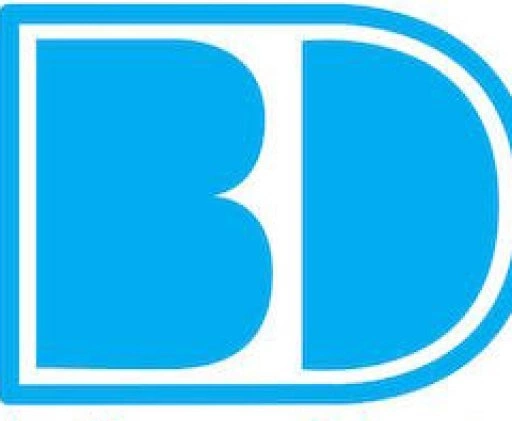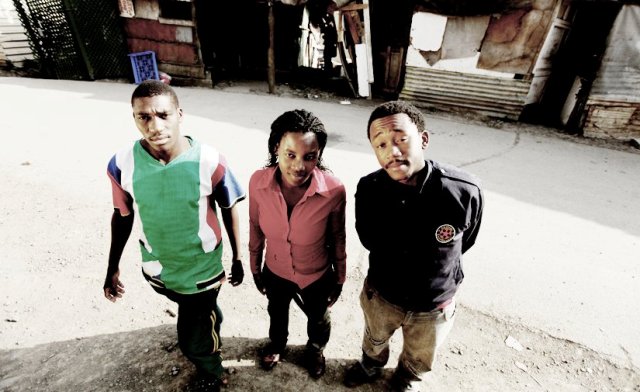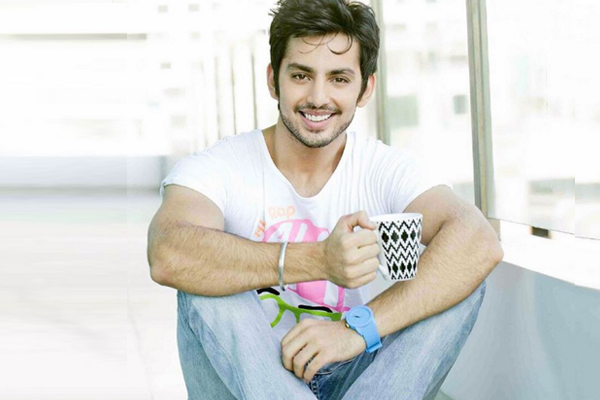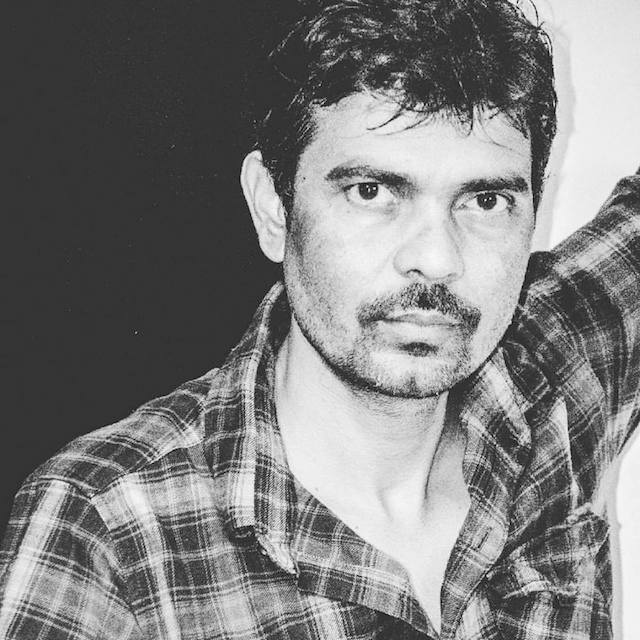Documentary film “Dear Mandela” has already won many awards around the world in various film festivals and getting screened in New Delhi today. “Dear Mandela” deals with the growing contradictions in post-Apartheid South Africa where the majority black poor continue to be victimized by the state through measures such as forced evictions.
This thought-provoking documentary, directed by Dara Kell and Christopher Nizza, follows the lives of three brave young people (Mnikelo, Zama, and Mazwi) living in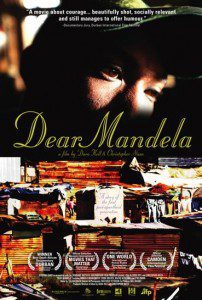 Shantytowns. It shows their rise from the slums on a journey, which sees them successfully tackle the brutal tyranny that deprives them, and millions of inhabitants, of their basic human rights. From protecting against unprecedented attacks in the middle of the night to changing government legislation, this film certainly shows that while one person can make a difference, three can change a country.
Shantytowns. It shows their rise from the slums on a journey, which sees them successfully tackle the brutal tyranny that deprives them, and millions of inhabitants, of their basic human rights. From protecting against unprecedented attacks in the middle of the night to changing government legislation, this film certainly shows that while one person can make a difference, three can change a country.
Find out how ‘Dear Mandela’ came to life in this exclusive interview with Dara Kell (Co-Director/Producer).
Q: What was the inspiration behind making Dear Mandela?
In 2007, Christopher Nizza (co-director) and I read an article in that was the trigger for the film. (‘The Struggle is a School’ by Richard Pithouse) The article was beautifully written and described the birth of a new social movement led by people living in shacks in Durban. The movement is called Abahlali baseMjondolo, Zulu for ‘Residents of the Shacks’. We were immediately struck by the beauty and clarity of their politics and philosophy. They weren’t only talking about what is wrong with South Africa, but they were also articulating a profound vision of what the world could be, how we could build a society based on respect, where everyone counts. It sounds utopian, but they are very practical about it. They call it ‘living politics’. It’s about treating people with respect, providing the things – water, electricity, toilets – that everyone needs to live a decent life. It’s about the government consulting with people, rather than evicting them and leaving them homeless.
We visited the movement in 2007 and the members of the Abahlali movement were resisting an especially brutal wave evictions, which were happening all over Durban and the rest of the country. The evictions, in almost every case, were illegal and violated South Africa’s constitution. We witnessed a young girl whose shack had been destroyed by municipal workers just an hour before we arrived. We also began to note that young people were rising into leading roles within the movement. Many of them were too young to remember the glorious day when Nelson Mandela walked free in 1990. They were passionate and compelling – not a ‘lost generation’ at all. We couldn’t walk away – we knew we had to make the film.
Q: Did you have any preconceived notions about shanty dwellers that changed during the course of engaging with the community?
Dara: I grew up in apartheid South Africa and was raised in a segregated suburb. I had little to no contact with people who lived in the shantytowns. It wasn’t until I studied journalism that I realized how much had been kept from my peers and me, and how these divisions seep into society, and feed inequality. I personally felt ill-equipped to work and live in a slum. Many white South Africans and even middle-class black South Africans have preconceived notions of shantytowns. They think they are full of criminals, that shack dwellers are less intelligent. I didn’t share these beliefs but I witnessed discrimination and I felt that it was the mark of an unhealthy society. That discrimination – the belief that poor people are somehow less capable – is why we wanted to make the film. We wanted to show the young people who are fiercely intelligent and brave community leaders, who defied the stereotypes and who we felt are the new leaders of South Africa.
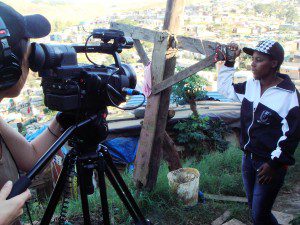 Q: Has the process of making this film changed you in fundamental ways as a person/added any new dimensions to your life?
Q: Has the process of making this film changed you in fundamental ways as a person/added any new dimensions to your life?
Dara: Most definitely. Making the film was an unexpected journey that has now lasted 8 years and taken my life in totally new directions. I didn’t foresee that. I’ve learned so much, met so many incredible people both during the making of the film, as well as during the distribution. Film screenings have a way of opening people up to dialogue, and I’ve always enjoyed the debates after screenings. I also love showing the film in new contexts and cultures. Sometimes it’s surprising how universal certain moments are. A joke that plays well in the movie in South Africa can translate well in a shantytown in Haiti, for example, and I love how humor and storytelling can actually unite people and create a common platform for dialogue across cultures.
Q: What kind of a relationship do you have with the community leaders at present?
We have a very strong bond with the community leaders, one that comes out of a relationship of mutual respect. We are dedicated not only to the main characters in the film but also to the movement that the film is about. We’ve been through some very hard times along with them – times even when all our lives were in danger, and we stuck around. And many years after the film is finished, we’re still doing screening tours like the one we’re doing now. The characters in the film have traveled around the world showing the film, and it’s great to have experienced this journey with them.
I think the key to making a good documentary is access and trust. We worked very hard to gain the trust of the film’s participants. We spent a lot of time getting to know people better (without the camera) and our understanding of the situation made it possible to make a film that is accurate and truthful.
I believe that documentary filmmakers have a duty to be truthful. Yes, we are working in the medium of cinema and so we must employ cinematic devices to keep audiences engaged, but the film has to ring true for the people it’s about – I think that is the test. We’re very happy that Abahlali members like the finished film.
Q: What was the response of the community to the film?
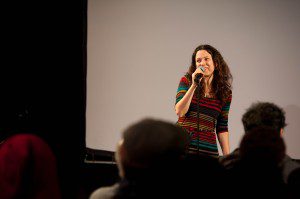
Here’s what S’bu Zikode, the former president of the Abahlali baseMjondolo movement, had to say at one of our screenings in July:
“DEAR MANDELA is actually capturing the day to day lives of ordinary people. And it could be used as an education tools in various institutions – at the universities, at schools, in the struggles, in the streets. I would encourage people to find it and be able to generate discussion. It’s not a question of just watching – and that’s it. It provokes thought, it talks to your heart, it talks to your mind, it talks to your conscience.”
S’bu Zikode, President of Abahlali baseMjondolo, at community screenings in Durban, South Africa, July 2011
And here’s another response: “I’m grateful for learning that a shack dweller can withstand anything, no matter how hard it is. Especially the scene where they were demolishing the shacks, even though there were traumatized, they were able to be strong and move on. Because as a shack dweller, you just have to persevere.” – Audience member, Emaus shack settlement, Durban, South Africa, July 2011
Q: How long did the whole process of making this film take? And how many crew members worked it?
It took about 5 years to make. We shot about 6 months stretched over that time. It was mostly just 2 crew members – Chris and myself.
In between, we worked freelance jobs and working on Dear Mandela on the side, as much as we could. We edited constantly, as soon as we came back we would put together scenes, and also we needed to do this because we were applying for grants and they needed to see rough cuts.
Q: What kind of challenges did you face during the production of the film?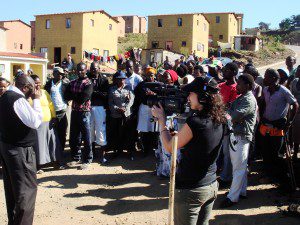
One of the biggest challenges was that none of the crew spoke Zulu. The main characters (who are fluent in English) were very accommodating in translating for us when we were in situations where Zulu was mainly being spoken. It was important to us that we make a largely verité film, so we didn’t want to stop the action while we were filming. We would keep the camera rolling even though we didn’t understand exactly what people were saying. We would pick up words here and there, and would make sure that the scene was still something that related to the overall story.
This approach meant that we had a huge amount of footage to work with – scenes that sometimes ran for hours. We were very fortunate to find South Africans living in New York who believed in the film and were willing to translate every word. This painstaking process was the only way we could edit the film so that it captured the essence of the movement, the heart of the story.
Q: Since you’re also an editor, how does that influence your work as a director?
It’s a massive help. Knowing how to edit a scene is the best training a director can have. It saves a lot of time because in the field you’ll know when you’ve filmed enough. And you’ll know when you need to get that one last cutaway, or that final wide shot that provides the context for the whole scene. I think the editing room is really where documentaries are made and I have huge respect for editors and the often-unsung work they do to tell brave, compelling stories.
Q: Tell us why you chose to have a screening in India and the relevance of this story to an Indian audience?
India and South Africa are similar in many ways. There is a very wealthy elite, and then millions of poor people. Many who live in slums in India face forced eviction, just as they do in South Africa and so we hope that Indians watching the film will see their own struggle reflected in the film. We also hope that it will be inspiring to them – that they will see that it is possible to build a strong, non-violent social movement even in the face of intimidation and repression.
India and South Africa are also connected because Gandhi spent a lot of time in South Africa, and there is a rich history there that binds the two countries together. There is a massive Indian population in South Africa as well.
Q: Can you tell us a bit more about the Outreach program that is planned in India?
Our team is going around the country, showing Dear Mandela in shantytowns and universities. We will distribute free DVDs of the Dear Mandela documentary overdubbed and subtitled in Hindi will be distributed to community leaders and social movements to enable these movements to host further screenings of the film independently. The screenings will bring together various communities and social movements involved in socio-economic struggles similar to those depicted in the film. S’bu Zikode and Shirley Mdodane two founding members of the South African shack dwellers movement Abahlali baseMjondolo (Abahlali), will take part in the screening tour and lead post-screening discussions. This will afford audience members the opportunity to engage with the central protagonists of the film and facilitated wide-ranging discussions on legal and social strategies to bring about socio-economic development in India.
Q: Since a number of young people all over the world are increasingly getting interested in making documentaries on social issues, do you have any advice or suggestions for them based on your experience?
I think the most important principle for me is to listen, first, rather than going in with a preconceived idea of the ‘message’ of the film. Dear Mandela has been embraced by the shack dwellers who are the ‘stars’ of the film, and that is the most important thing to me, ultimately. They show it when they are invited to speak in other countries, and they feel that they can stand behind it – that it accurately represents their struggle.
These films are hard to finance. We found fundraising very difficult – and if it hadn’t been for our main funder, the Sundance Institute, we wouldn’t have been able to make the film in the way that we did. They believed in the film and we’re so grateful for that. It was hard to convince funders to take a chance on us, as first time filmmakers, and especially with a film that could be viewed as an ‘activist’ film. We don’t see it as an activist film – we see it as a story that needed to be told, and one that somehow we were tasked with telling it. The main characters are activists, and so we had to highlight other aspects of the story in order to show that it wasn’t just about a cause – that we had a real, compelling story on our hands.
Having a parallel career – both Chris and I are documentary and TV editors – really helped. We would work freelance jobs, save money, and then be able to go and shoot the film for months at a time. That was the only way the film could get made since we didn’t have solid funding throughout. My advice would be to learn how to edit because paying an editor is one of the biggest costs involved. Being able to at least do some of the editings is very useful – and then bringing on a great consulting editor to keep you on track, and sane. We worked very closely with Mary Manhardt who was fantastic and a much-needed third pair of eyes.
.
